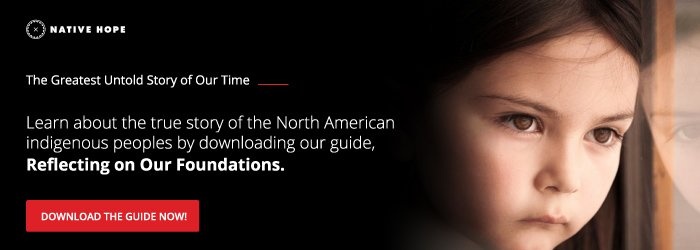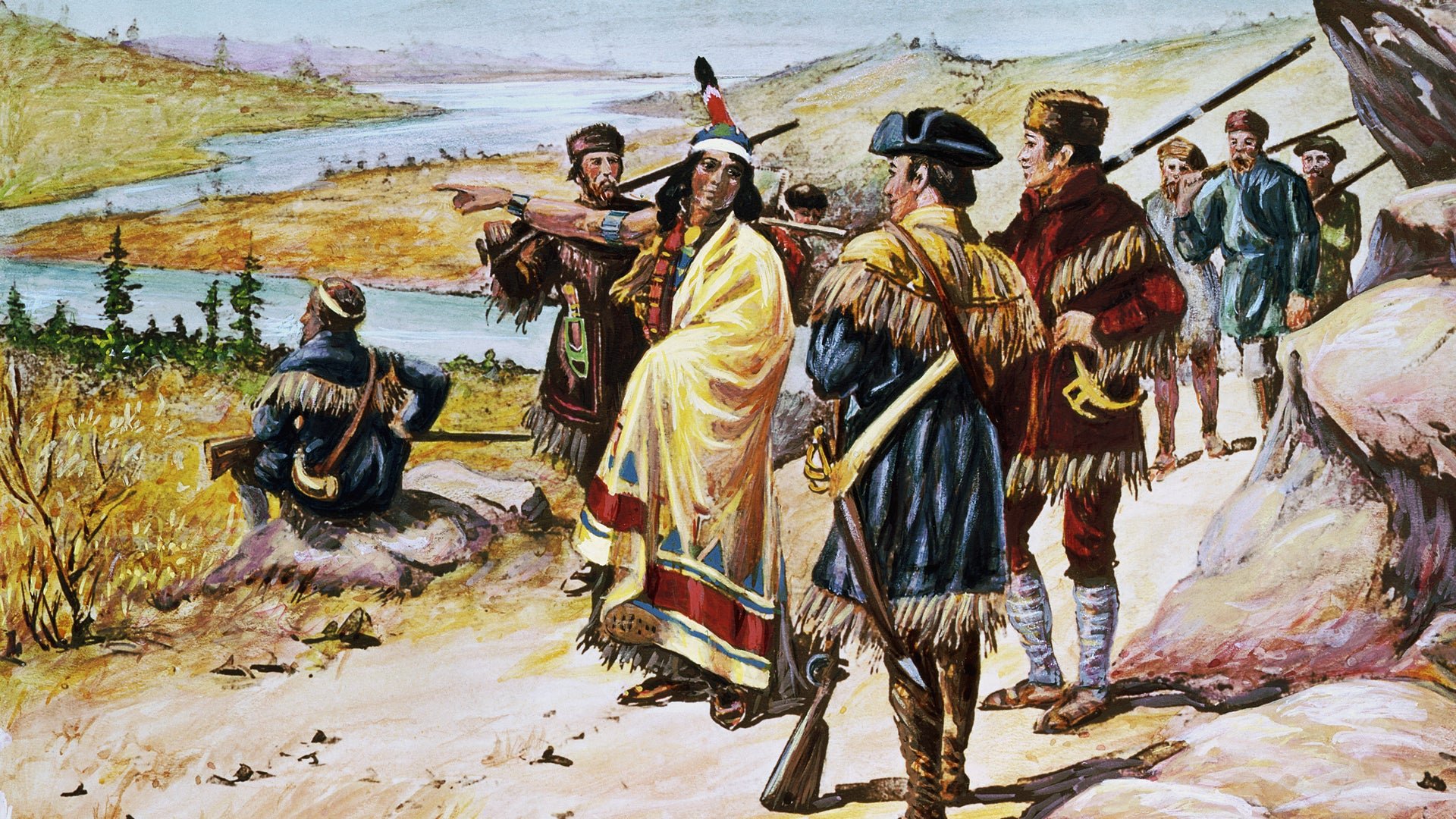Nov 6, 2022 | Native Hope
One of the most well-known and influential tribes in Native American history, the Iroquois have a fascinating story.
The name "Iroquois" refers to a language, not the particular tribe itself. In fact, the Iroquois people called themselves the Haudenosaunee, or "the people of the longhouse." The Algonquins, their rivals, were the group to name them the Iroquois, which means "rattlesnake." The Algonquins called them this because they were skilled fighters and hunters and could not be heard sneaking up on their enemies until the last minute.
"Iroquois" also refers to a group of five separate tribes. These five tribes were: Mohawk, Oneida, Onondaga, Cayuga, and Seneca.
This diverse and influential group of Native people impacted the politics and history of their time, and their contributions to society and voices in media are still felt today.
Where Did the Iroquois Live?
The Iroquois lived mainly in Ontario, upstate New York, and some sections of Pennsylvania. An established group, they settled near lakes and weren't as nomadic as other Native American tribes. They did move every ten years or so not to deplete the wildlife of one area too quickly. The Iroquois mainly lived in the regions that were easy to defend, like those close to hills and water.
Their choice to live on the northern shores of Lake Ontario helped the Iroquois gain control of the fur trade from the north and west. The whole of the Iroquois tribe is distinct from the Five Nations, or the Iroquois Confederacy.

Creating the Iroquois Confederation
After fighting for years within their tribe, the Iroquois developed the Iroquois Confederation, championed by the Great Peacemaker (Deganawidah), Hiawatha, and Jigonsaseh. There are varying reports on when the confederacy started, but it seems to be sometime within the 1500s. The original confederation consisted of five tribes: Seneca, Mohawk, Oneida, Cayuga, and Onondaga. These tribes united to form a political system with a two-house legislature.
The house representatives were called sachems, and there were advisory council members called Pine Trees. There were fifty delegates, all men, and all chosen by the clan mother. Pine Trees, however, could be male or female, and the right to be a member was earned through heroic feats and accomplishments as a warrior. The Onondaga had fourteen sachems and could break ties and veto decisions within the confederacy. The Cayuga had ten sachems, the Mohawks and Oneida had nine, and the Senecas had eight. Each council had its own methods for deciding on issues, but their representatives and organized system based on kinship and loyalty helped to settle conflicts.
The Iroquois Confederation was much more advanced than any other government around that time. Benjamin Franklin greatly admired their form of council, and aspects of the confederation can be seen in the United States Constitution.
In 1722, the Tuscarora people became part of the Confederacy, and the group became known as the Six Nations. The confederacy split after the tribe took different alliances in the Seven Years' War.
Inside the Famous Iroquois Longhouse
The Iroquois Longhouse was the center of community and family life in the tribe. These houses were made from layers of elm bark and built around a frame of logs. They could usually hold up to sixty people but varied in size from fifteen to one hundred and fifty feet long and fifteen to twenty-five feet in breadth.

Image Source: Britannica Kids
Longhouses were divided into apartments with fireplaces in the middle of each hall. Two families typically shared a fireplace. The households were made up of divisions of clans. Groups of clans made up each moiety, and two moieties combined to create a tribe. Each line had a clan matron who helped to pick the Sachems for the confederacy. Overall, the Iroquois family structure was matriarchal.
All clans could trace their lineage to a shared ancestor, and the longhouse kept records of their descendants. An animal also guarded each clan; images of those animals were carved over the longhouse's doorway and into the babies' cradleboards.
Women cared for the housework, tended gardens, collected food, and prepared meals within the longhouse. They also made clothing and household items. It was considered polite for women to always have food ready for their husbands, children, and guests.
Iroquois Food
The Iroquois primarily used agriculture as their primary food source, employing the slash-and-burn farming method to ensure fertile land for crops. They harvested crops from what they called the three sisters: corn, beans, and squash.
Iroquois also harvested maple syrup, blackberries, raspberries, huckleberries, strawberries, walnuts, hickory nuts, acorns, beechnuts, chestnuts, skunk cabbage, mustard greens, dandelions, and milkweed.
Men hunted deer, elk, moose, bears, geese, ducks, pigeons, and rabbits. The men used spears, hooks, and nets to fish. The Iroquois traditionally only ate one meal a day, and if one was hungry outside of that meal, one was expected to find and prepare their food. Traditional Iroquois dishes included corn soup, succotash, Indian pudding, and samp, a type of porridge with beans and dried meat.
Iroquois Religion and Spirituality
The Iroquois creation story starts with a Sky World, where no one died or was born, and a great tree gave life to all the world. One day, the tree was uprooted, and the Sky Woman fell through the hole left by the tree. She landed in the water, and two swans saved her from drowning by helping her onto the back of a great turtle. Animals started to put mud on the back of the great turtle, and from that mud, grew the earth. The Sky Woman planted seeds she brought with her into the ground. 
Later, the Sky Woman had a daughter who had two sons: one good and one evil. Each son created things in the world. The evil son made evil things, and the good son made good and helpful things. The Iroquois believed that the sons from the creation story impacted their daily lives and well-being and that the good Creator, Ha-wen-nu-yu, could bring good things into their lives, but the evil son could negatively affect their lives if they didn't live rightly.
The Iroquois believed in many spirits, including the spirits of the three sisters, who were responsible for harvesting corn, beans, and squash. Iroquois spirituality also included belief in the Thunderer and the Great Spirit. They prayed to the spirits that provided food and everything necessary for life before eating to thank them and ask for the food to be nourishing.
Iroquois also believed that all plants and animals have spirits, so they asked permission from the spirit before killing animals. As an expression of their reverence for the spirits of animals and plants, Iroquois didn't take more than they needed from the earth and used every part of the animals they hunted.
The Iroquois also place a high value on dreams and their interpretation. They believe dreams give information about what a person desires and help people fulfill the things shown to them in dreams. The society of masks acts out dreams that tribe members express, hoping to heal any ailments and make a dream come true.
Iroquois communities hold six religious ceremonies a year:
- New Year Festival: Held in midwinter and celebrated for seven days
- Maple Dance: Held in February to thank the Creator for maple
- Planting Festival: A time of prayer to the three sisters and the Creator for a good crop that year
- Strawberry Festival: A time of thanksgiving to the strawberry spirit and the Creator for making strawberries
- Green Corn Festival: a four-day festival that thanks the three sisters for corn, beans, and squash
- Harvest Festival: a four-day festival that thanks the three sisters for the coming year's prosperity.
In addition to the traditional religious festivals, the Iroquois also held healing ceremonies. Members of healing societies wore false faces as members of the tribe burned tobacco and offered prayers. The face masks were carved into living trees and then cut out to be painted. These masks represented the grandfathers of the Iroquois and were meant to connect humans to nature and to frighten away any spirits that would cause illnesses.
The Iroquois also conducted condolence ceremonies for community members, especially when a sachem died. These ceremonies were held on reservations until the 1970s. The Iroquois believed that the soul journeys to the Sky World after death. This process takes about a year, and the spirit has to go through ordeals before it is at rest in the Sky World. The Iroquois mourn for the spirit throughout this year and then celebrate the soul's arrival in the sky world.
Today, the Iroquois still participate in healing ceremonies through the three medicine societies. The False Face Company holds rituals to heal people by driving away spirits. The Husk Face Society is formed of Iroquois who have seen messages in their dreams from the Spirits and use those dreams to heal people. The third society is the Secret Medicine Society, which conducts rituals to heal the sick.
Iroquois Tribe Facts
In the Iroquois tribes, women held an honored role in society. They were believed to be linked to the earth's power to create life. As such, they decided how food was distributed among the tribe. Women were also allowed to pick the sachems for the confederacy. Tribes traced family lineage from the mother, and when members of the tribe were married, they moved into the mother's longhouse.
In line with their belief in the value of resources, especially animals, the Iroquois used every part of their hunt to create clothing, instruments, and methods to tell the tribe's history. One of these ways to tell history is through using wampums, which are belts made with shells and beads. These belts also communicated the tribe's laws.
Iroquois children played with corn husk dolls and played lacrosse. The Iroquois also had a game called "snowsnake," in which children would dig tunnels in the snow and then slide long poles into the holes and see whose rod would go the farthest.
Both men and women could become healers and were well-versed in using herbs to treat illnesses. They could also tend to wounds and broken bones and perform surgery. Today, Iroquois may seek a mix of traditional, Native methods of treating the spiritual aspect of the illness, as well as engaging with Western medicine to treat the condition. Diseases are believed to consist of spiritual and physical parts, so treatment addresses both aspects of the sickness.
Iroquois tribes produced art through bowls, clay pipes, bags, and clothing. The Iroquois would incorporate imagery about their beliefs, such as images representing the great turtle and the sky. They attached moose hair and porcupine quills to the artwork to show dimension and add to the effect.
Are the Iroquois Still Around Today?
Today, approximately 45,000 Six Nations people live in Canada, and over 81,000 reside in the United States. Most of them are categorized based on the eighteen registered communities. Iroquois people today are making an impact on movies, television, and print media.
A famous person from the Iroquois tribe is actor Graham Greene, who has worked on stage and in filmed productions in the United States, Canada, and the United Kingdom. His filmography includes roles in Dances with Wolves, Transamerica, The Shack, The Green Mile, and Wind River. Part of the Oneida tribe, Greene was born on the Six Nations Reserve in Ontario and continues to make a difference in how Natives are portrayed in the media through his work.
Want to learn more about Native American history?
Grab our guide, Reflecting on Our Foundations, to learn about:
- Different tribes and where they lived
- Native American values and spirituality
- How learning and culture were passed down through generations
- How colonization impacted and disrupted Native American life
- And much more!





COMMENTS